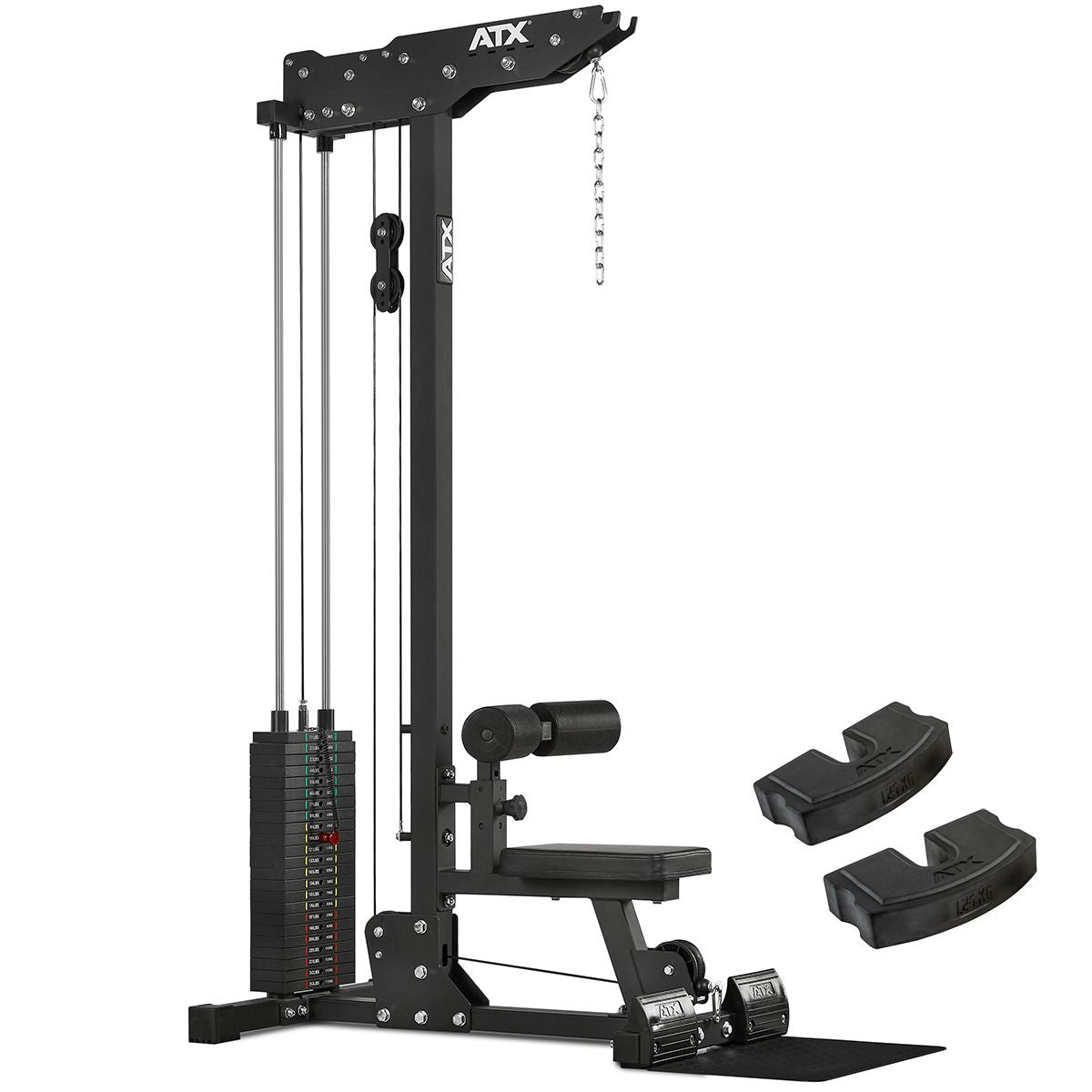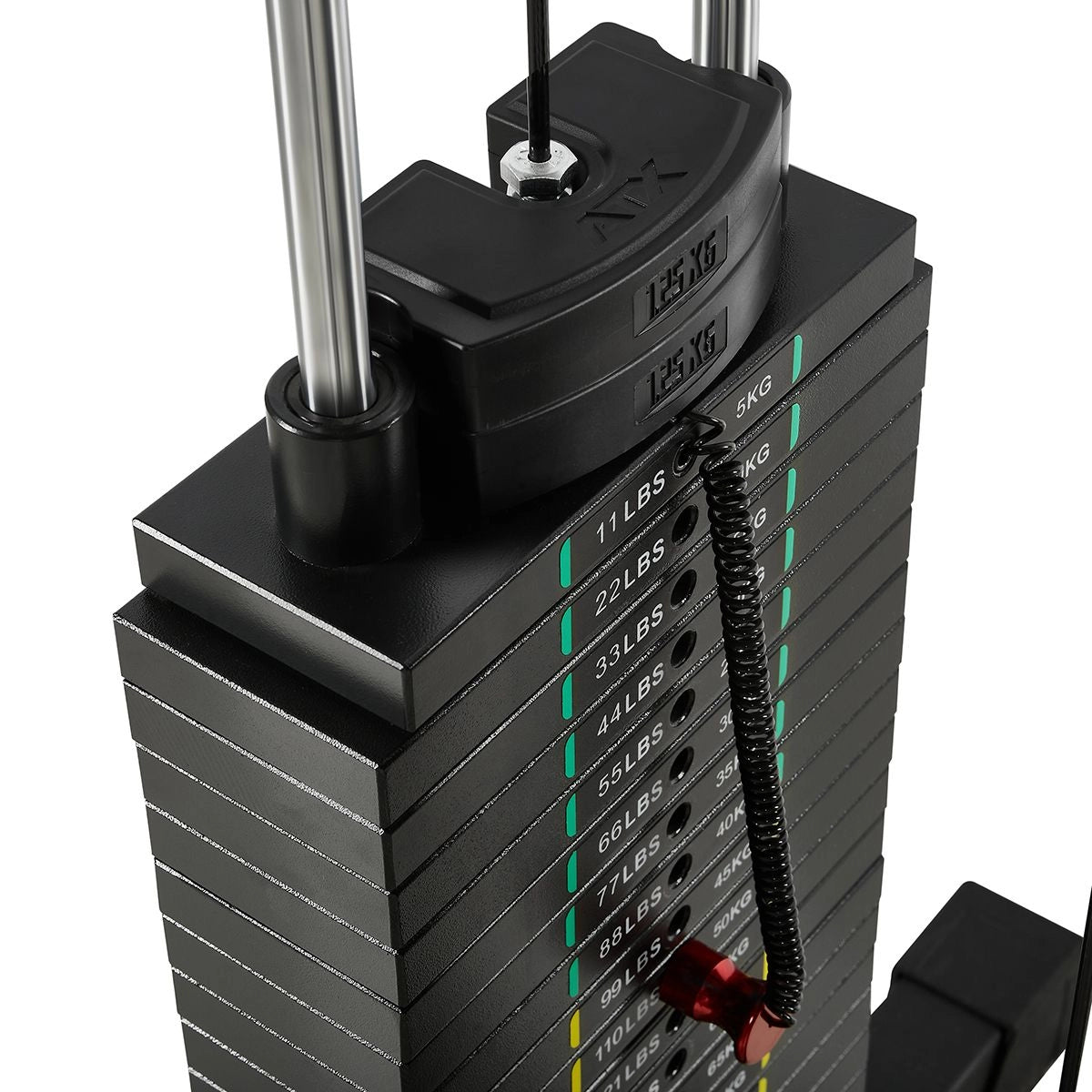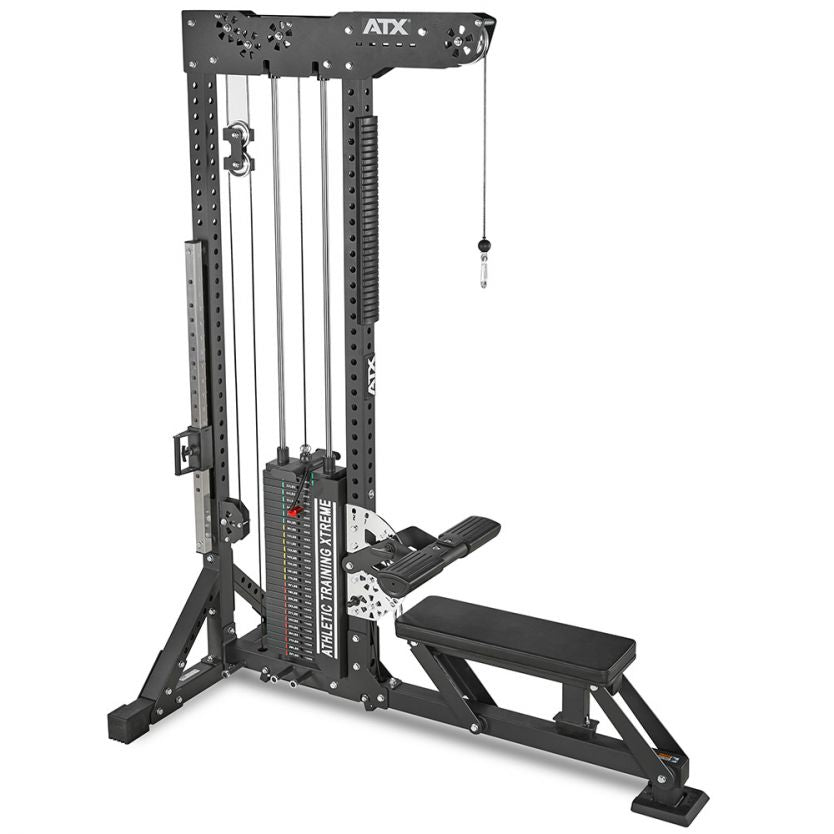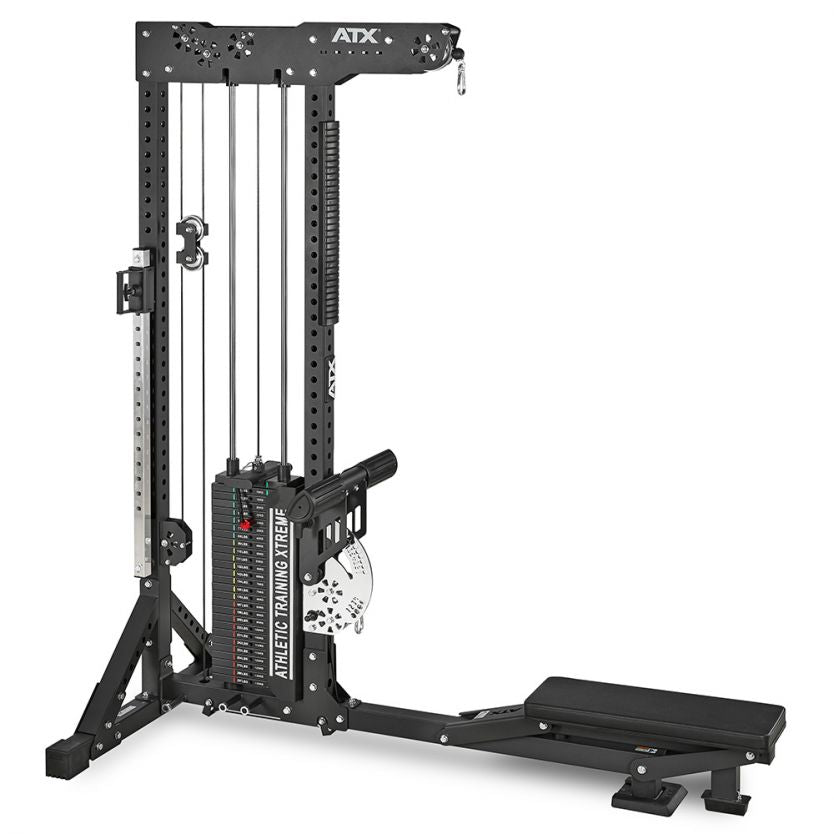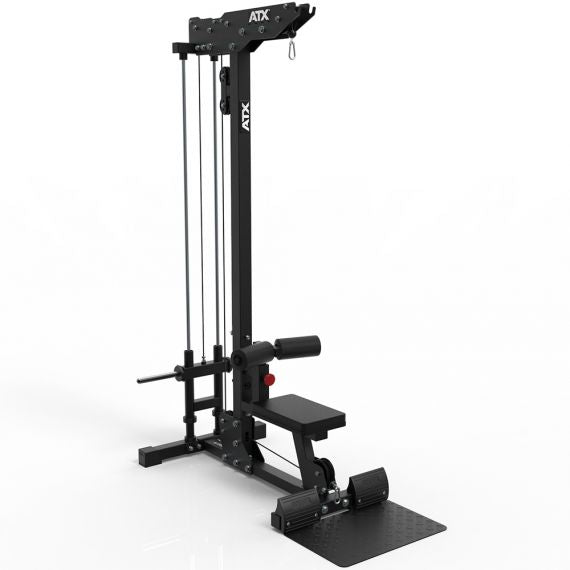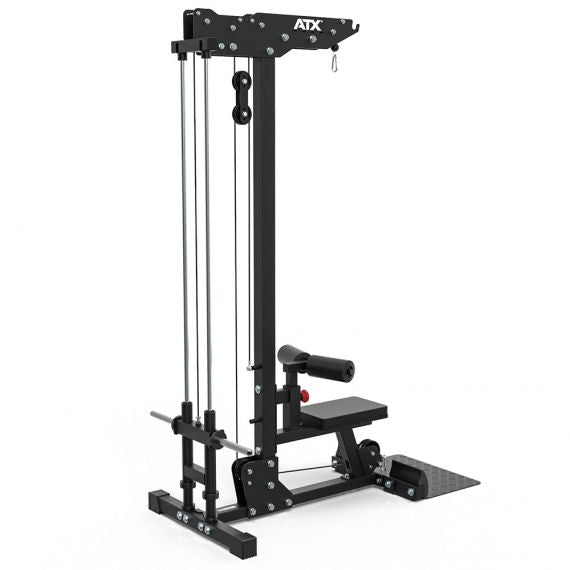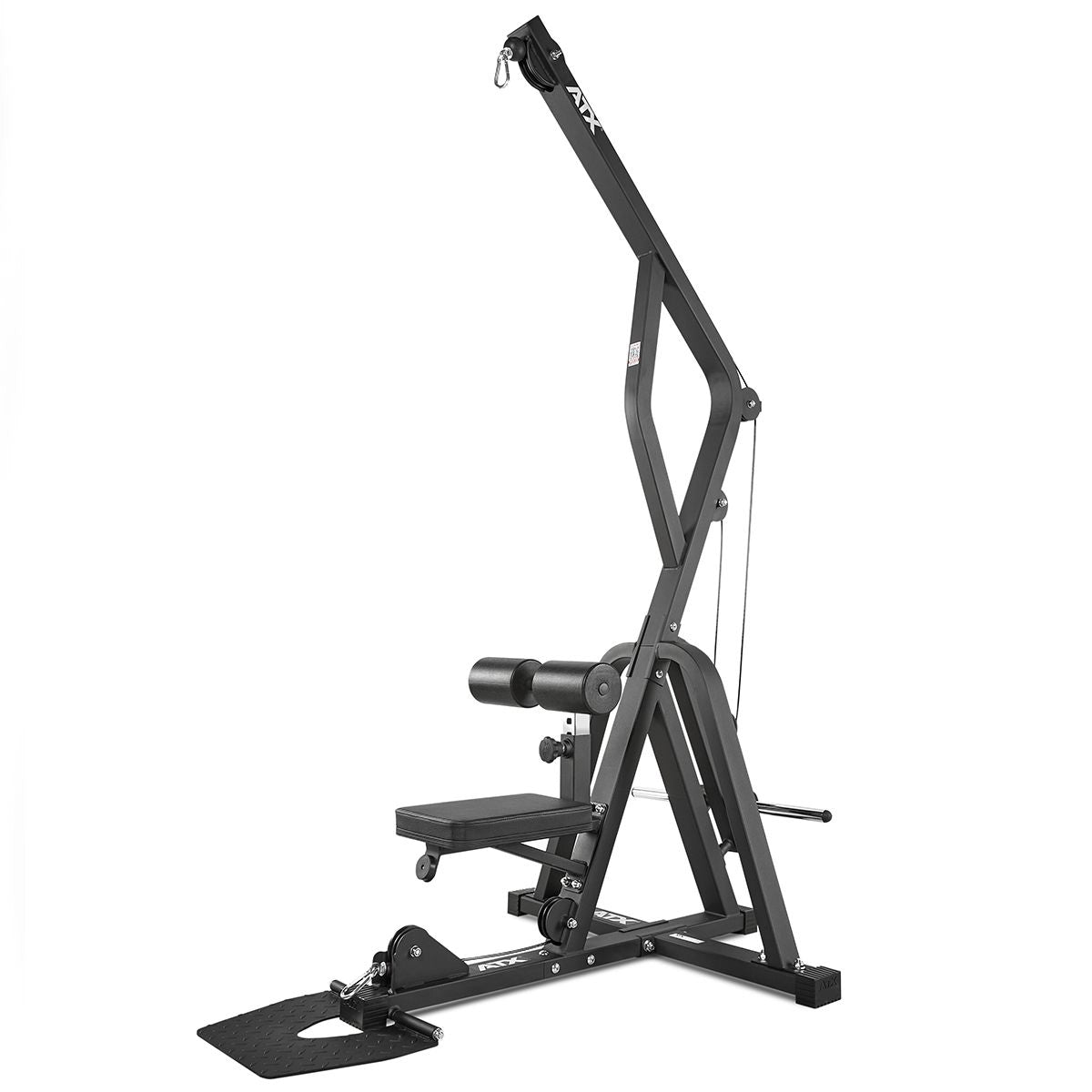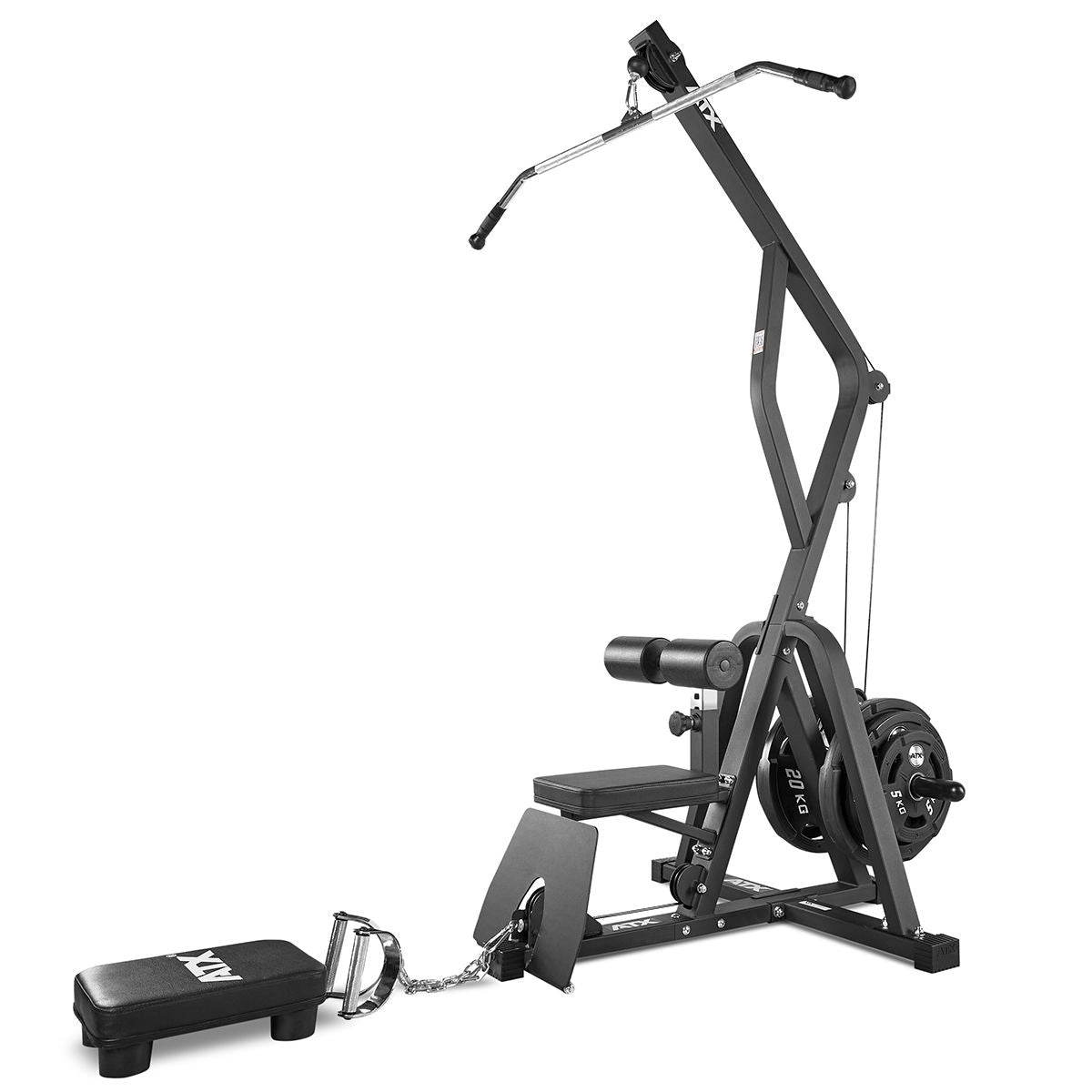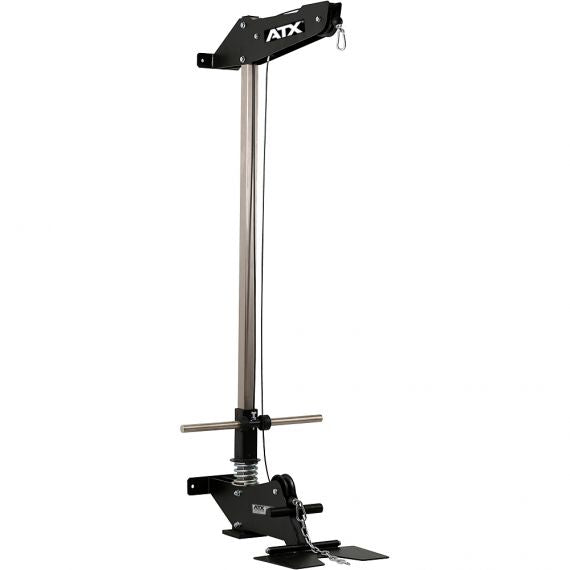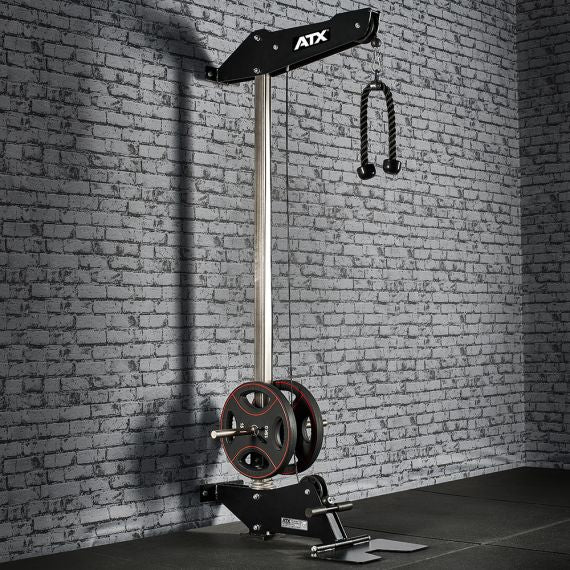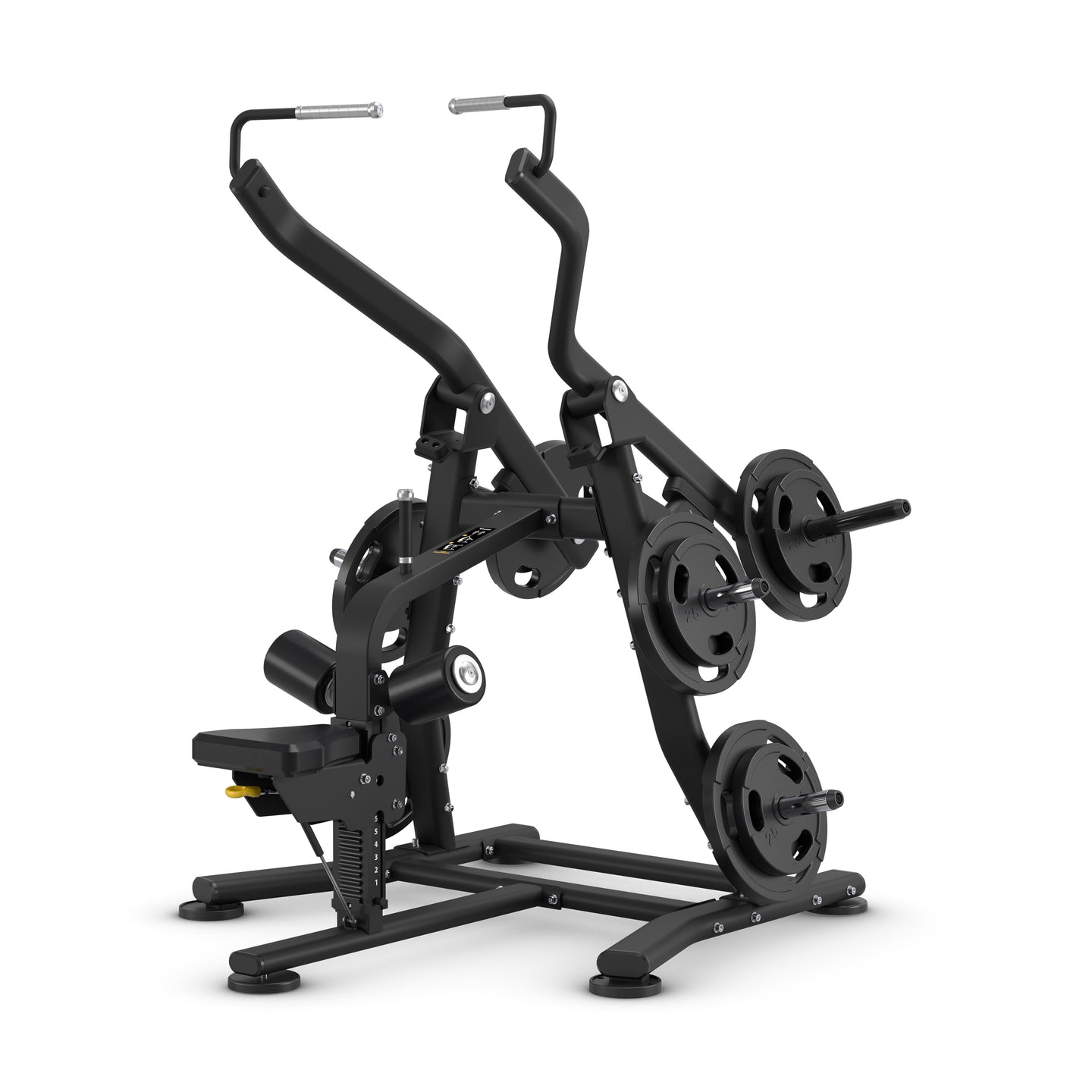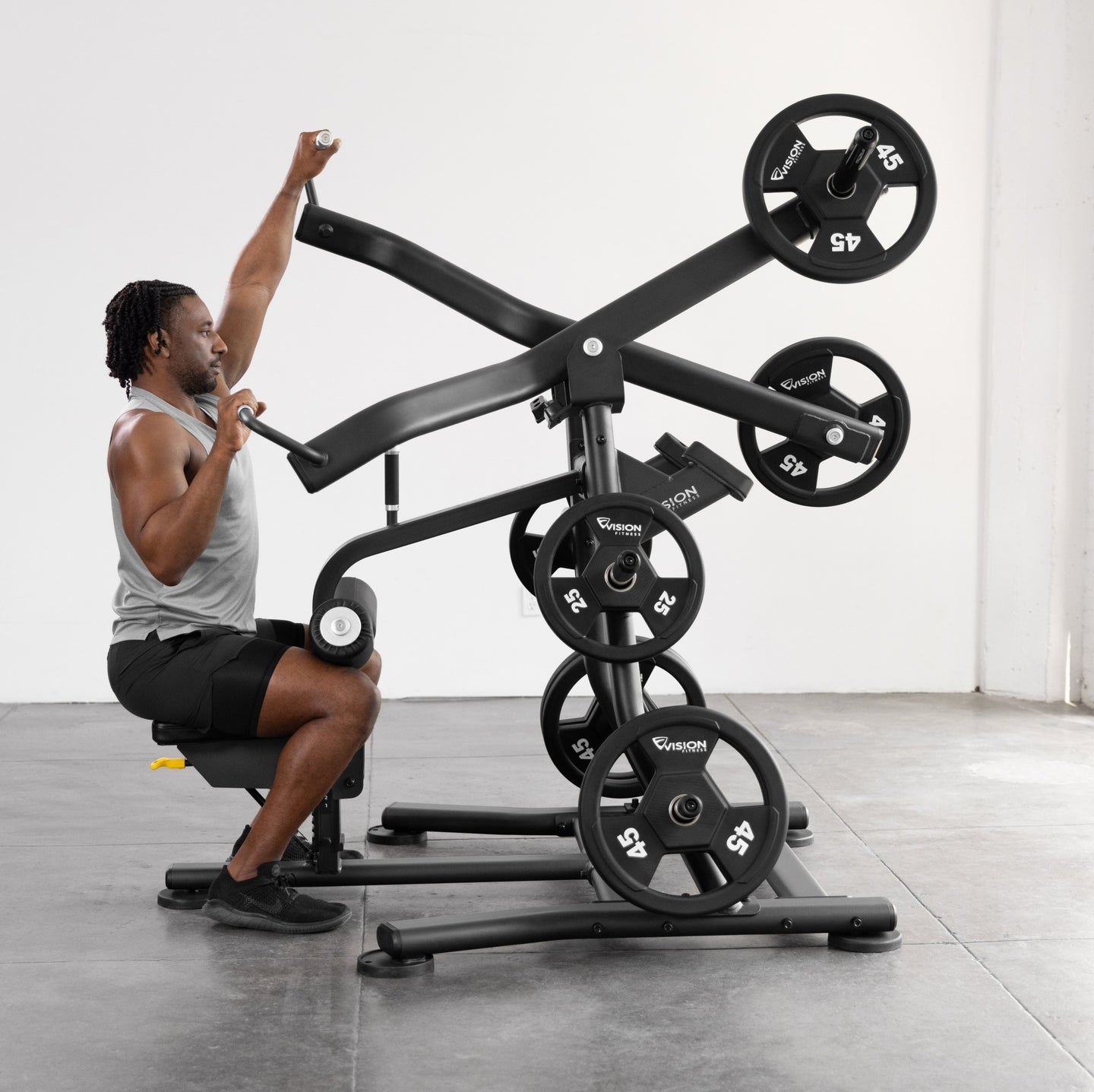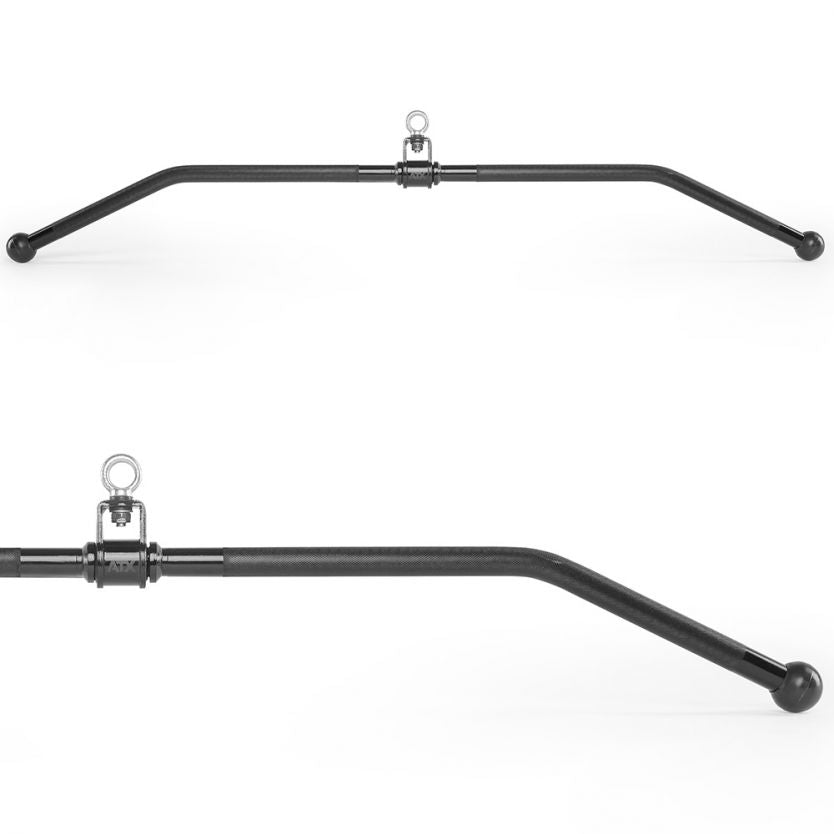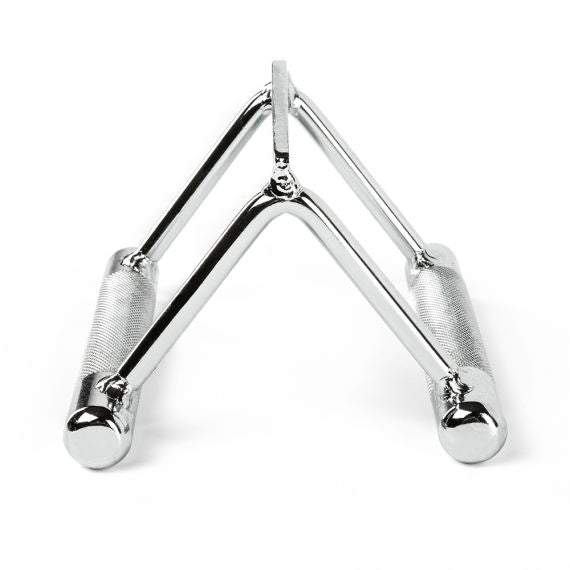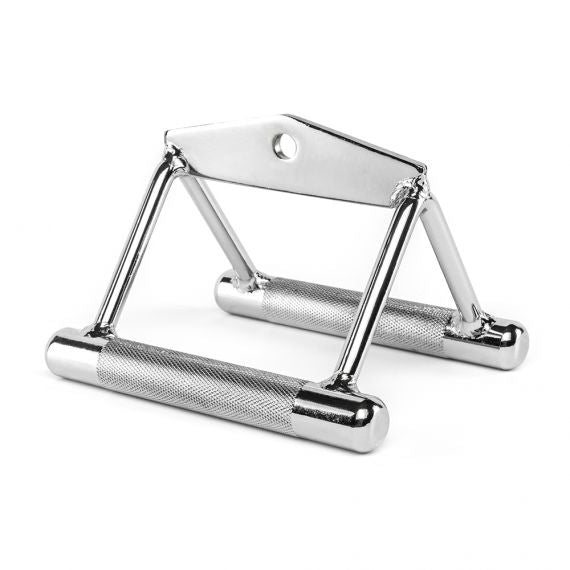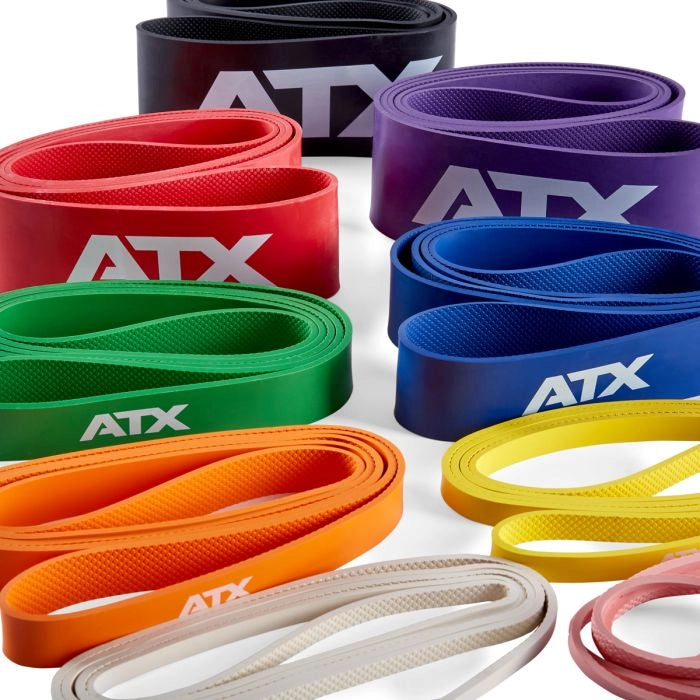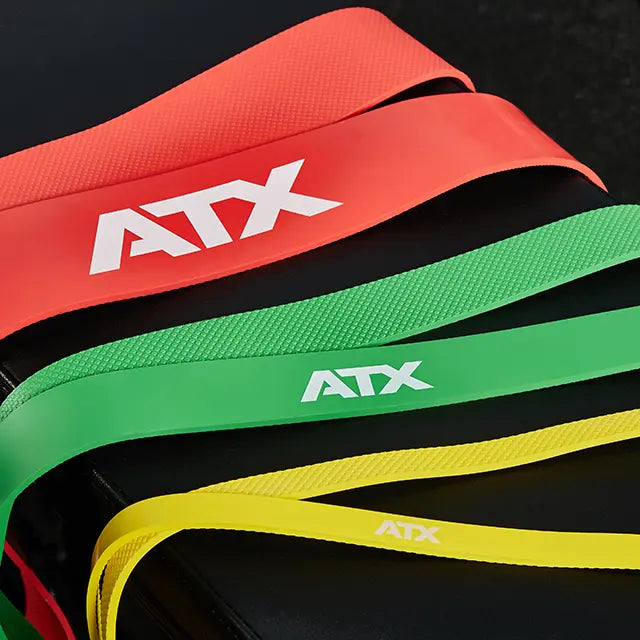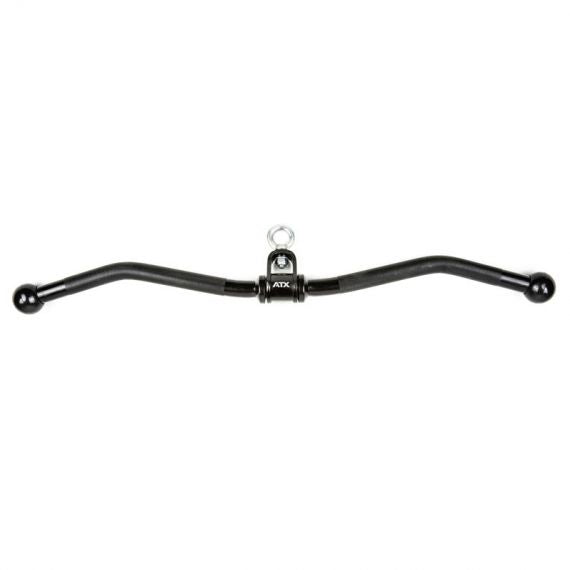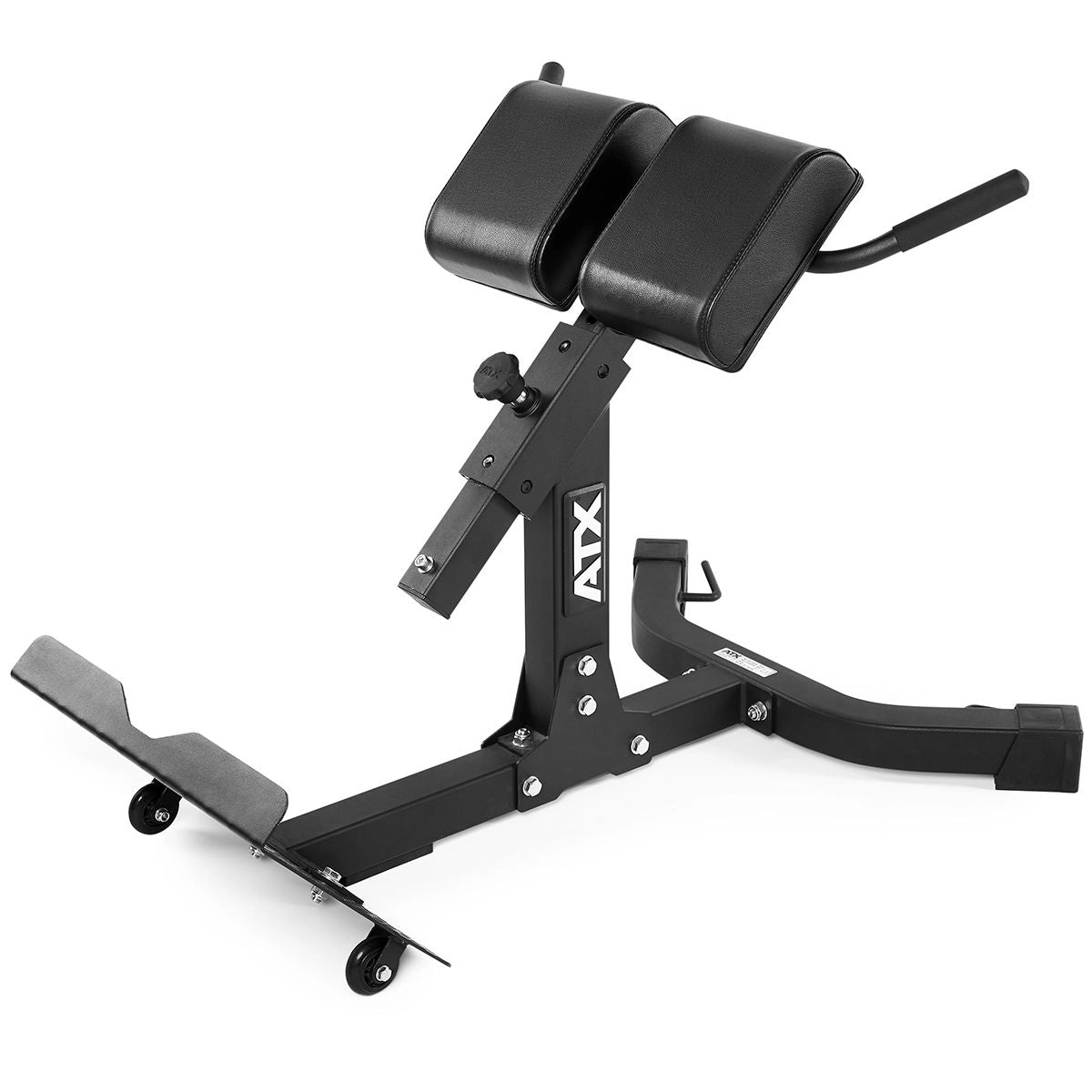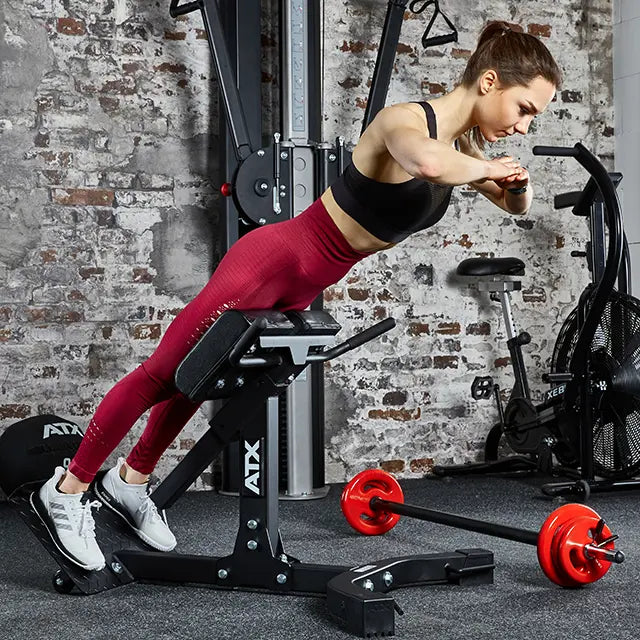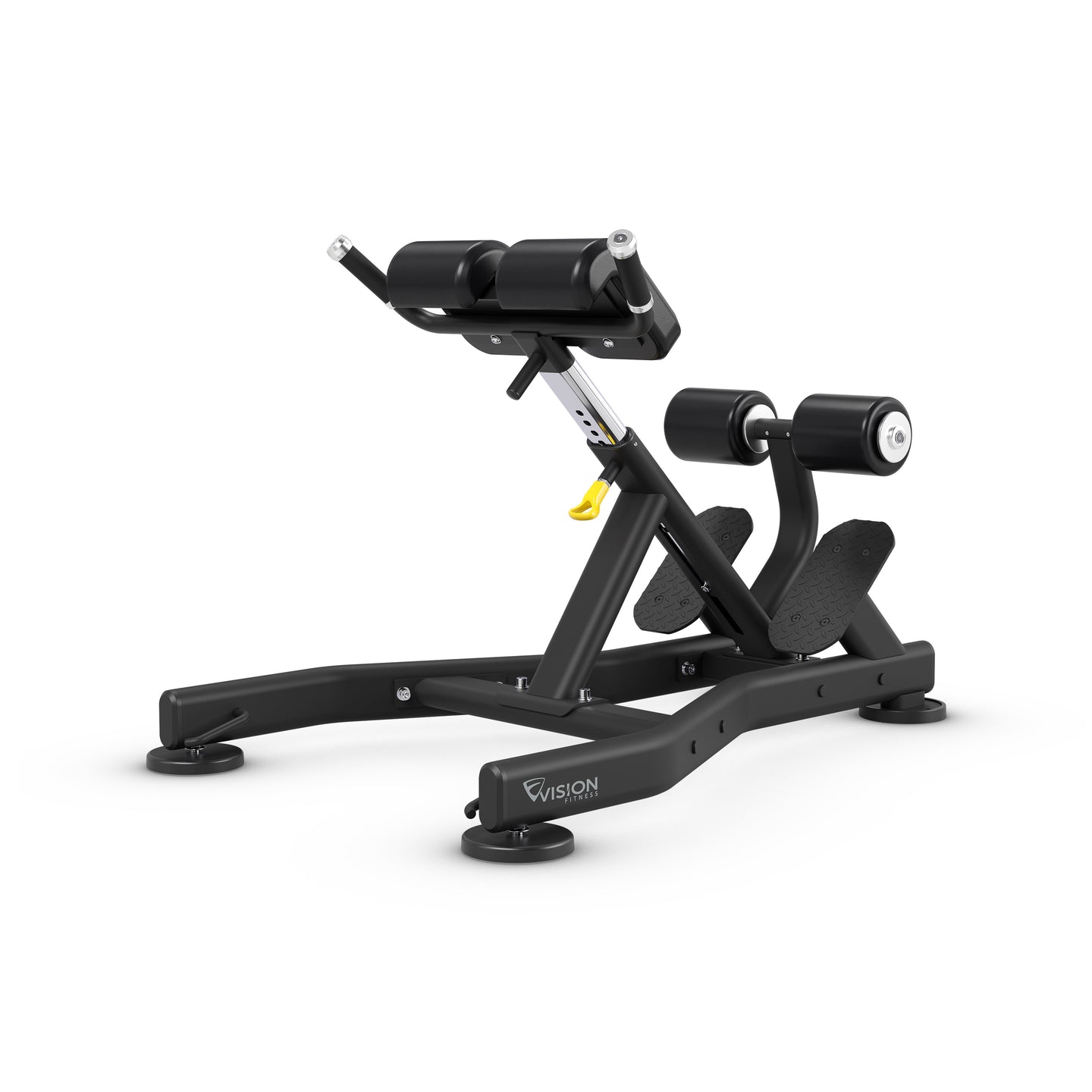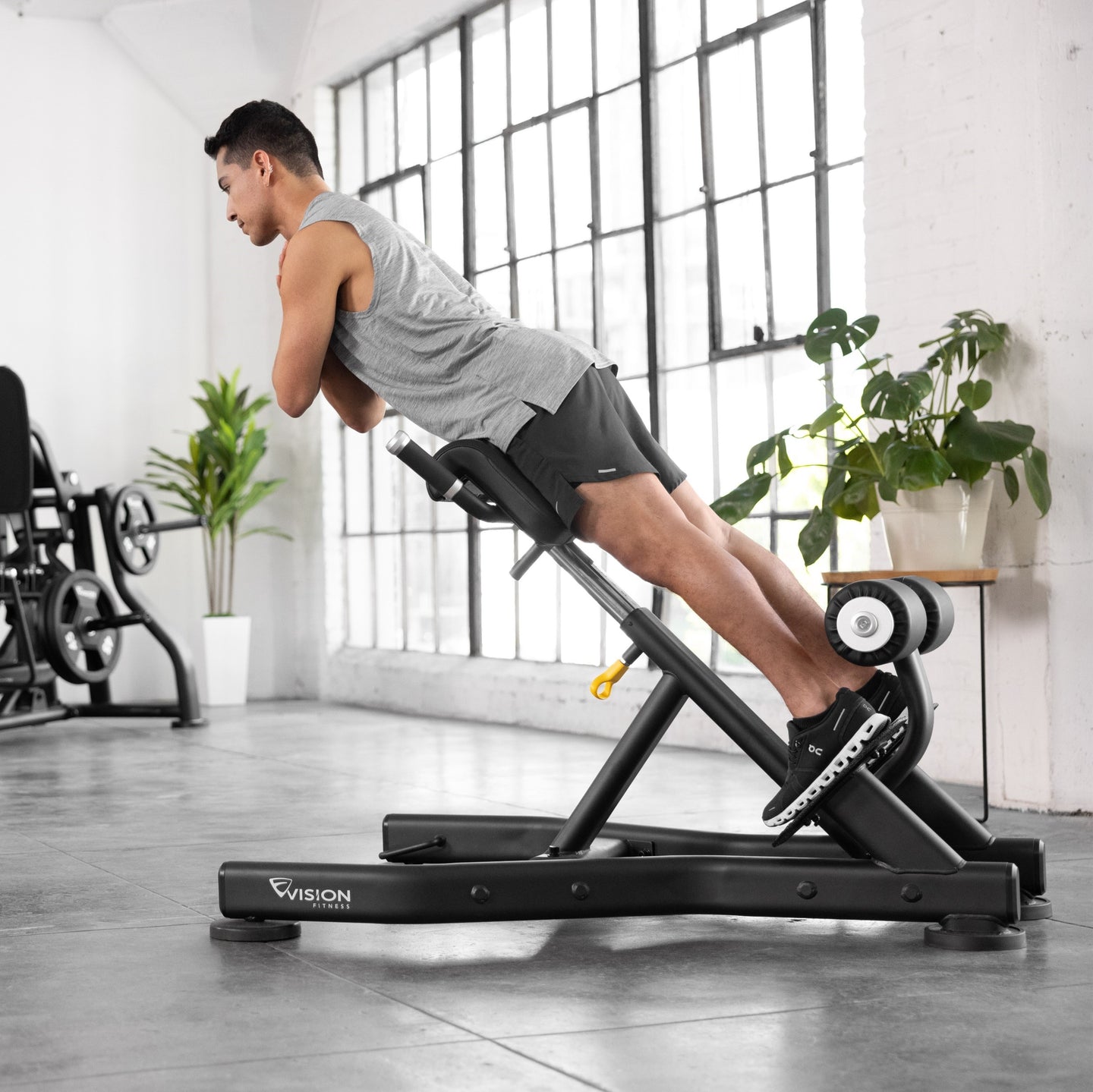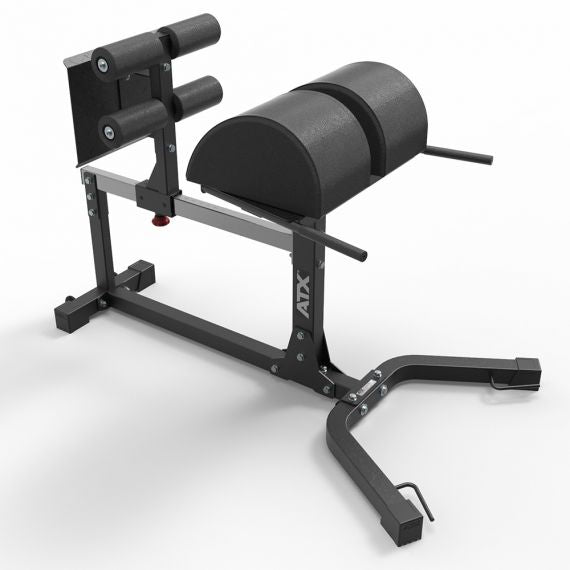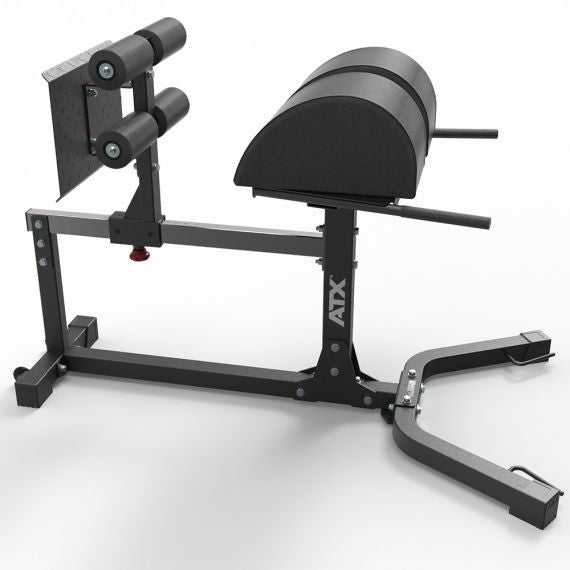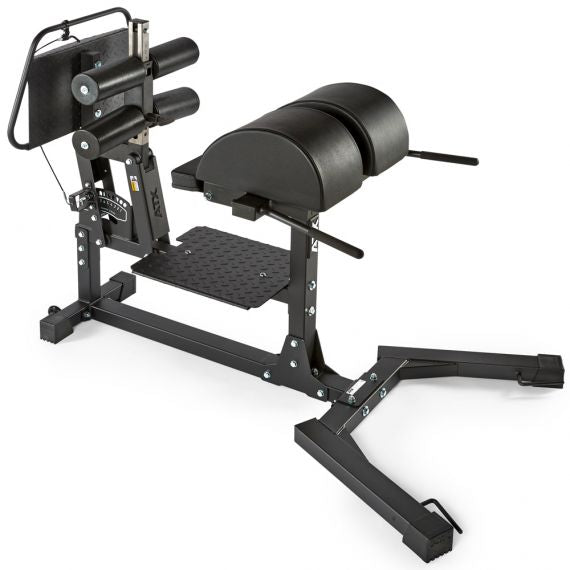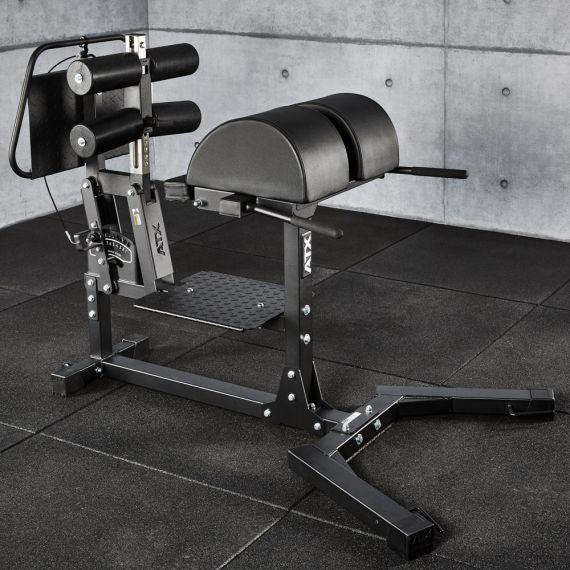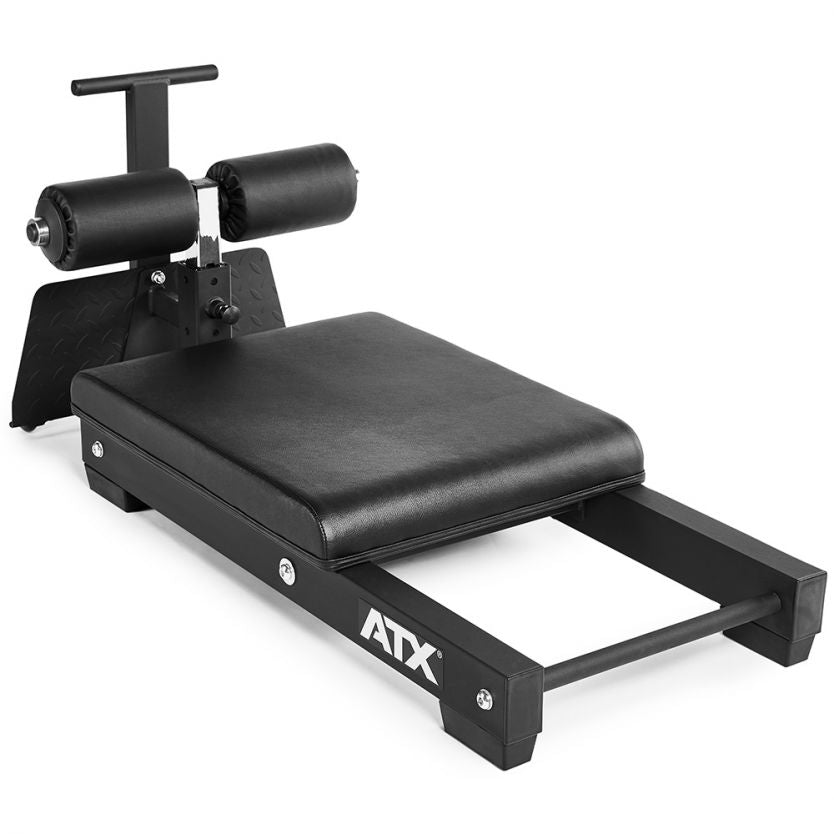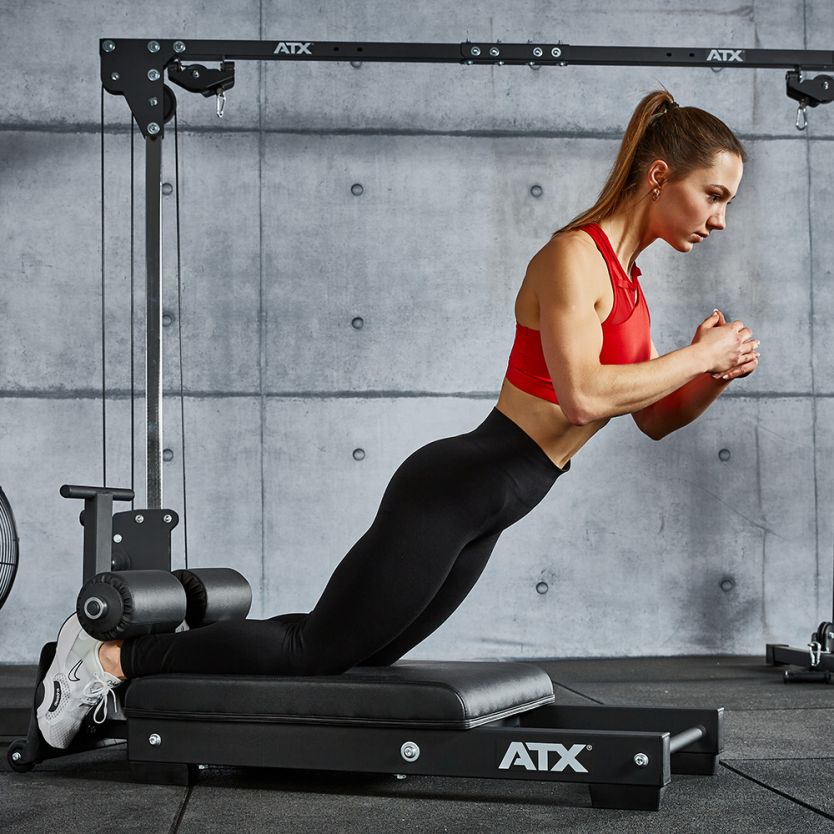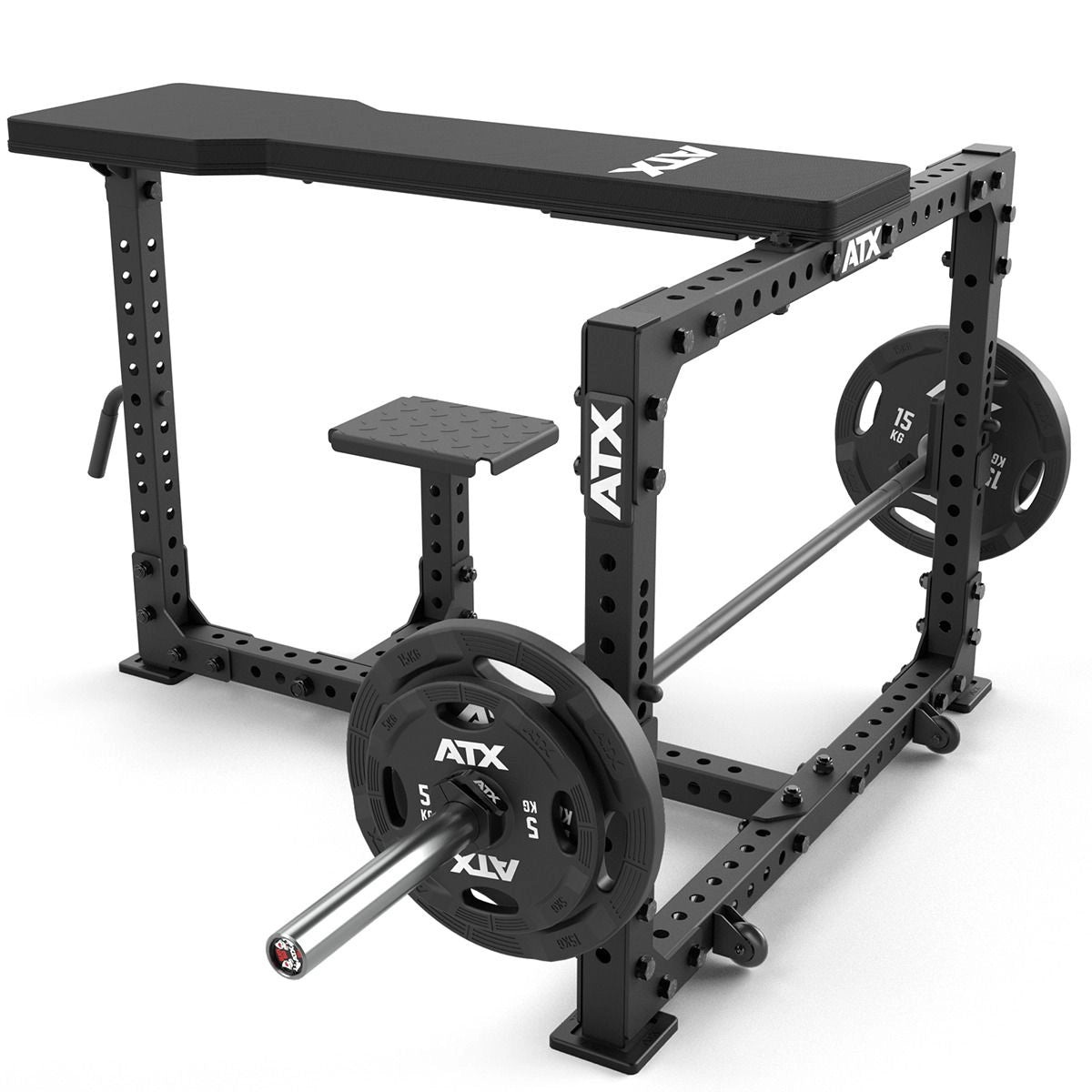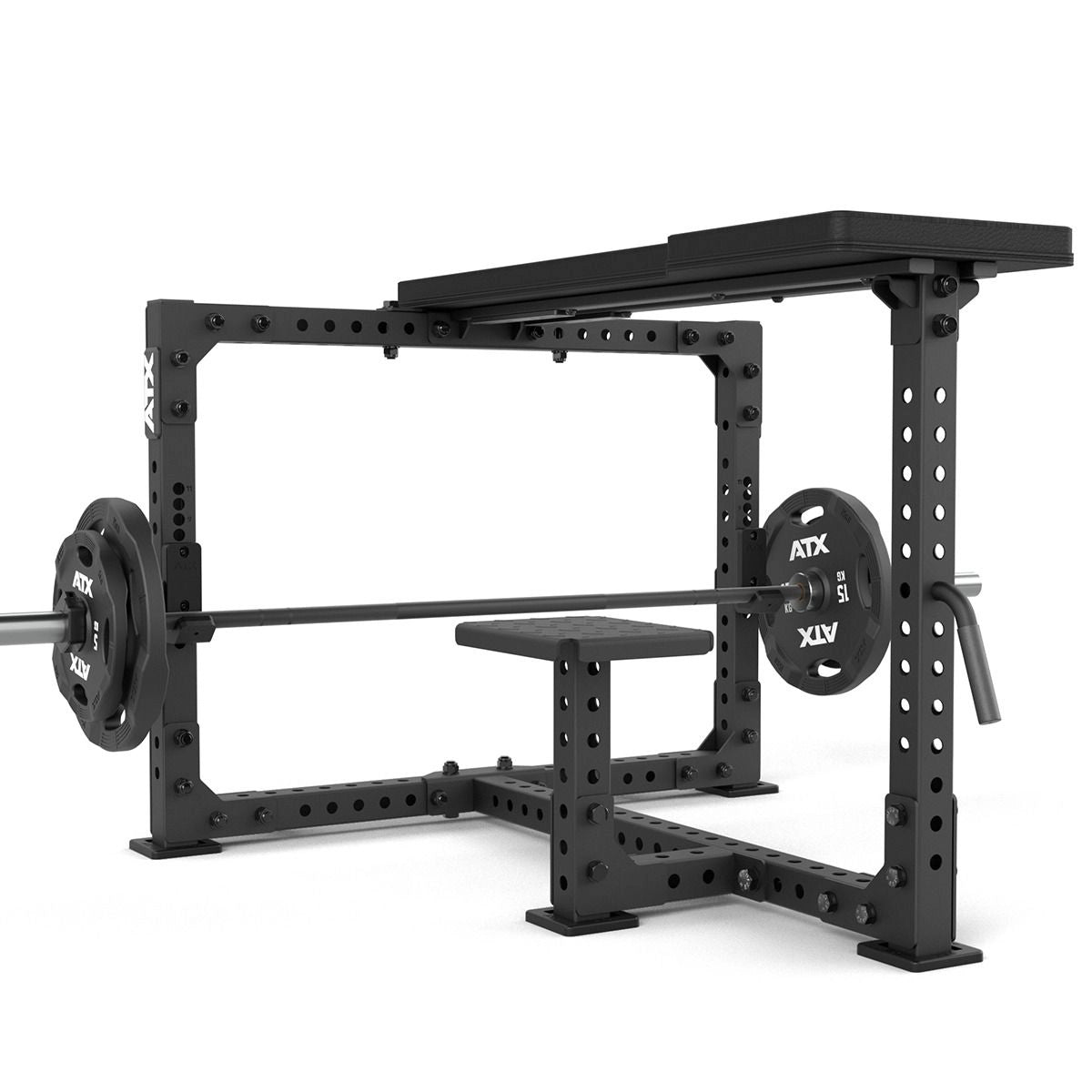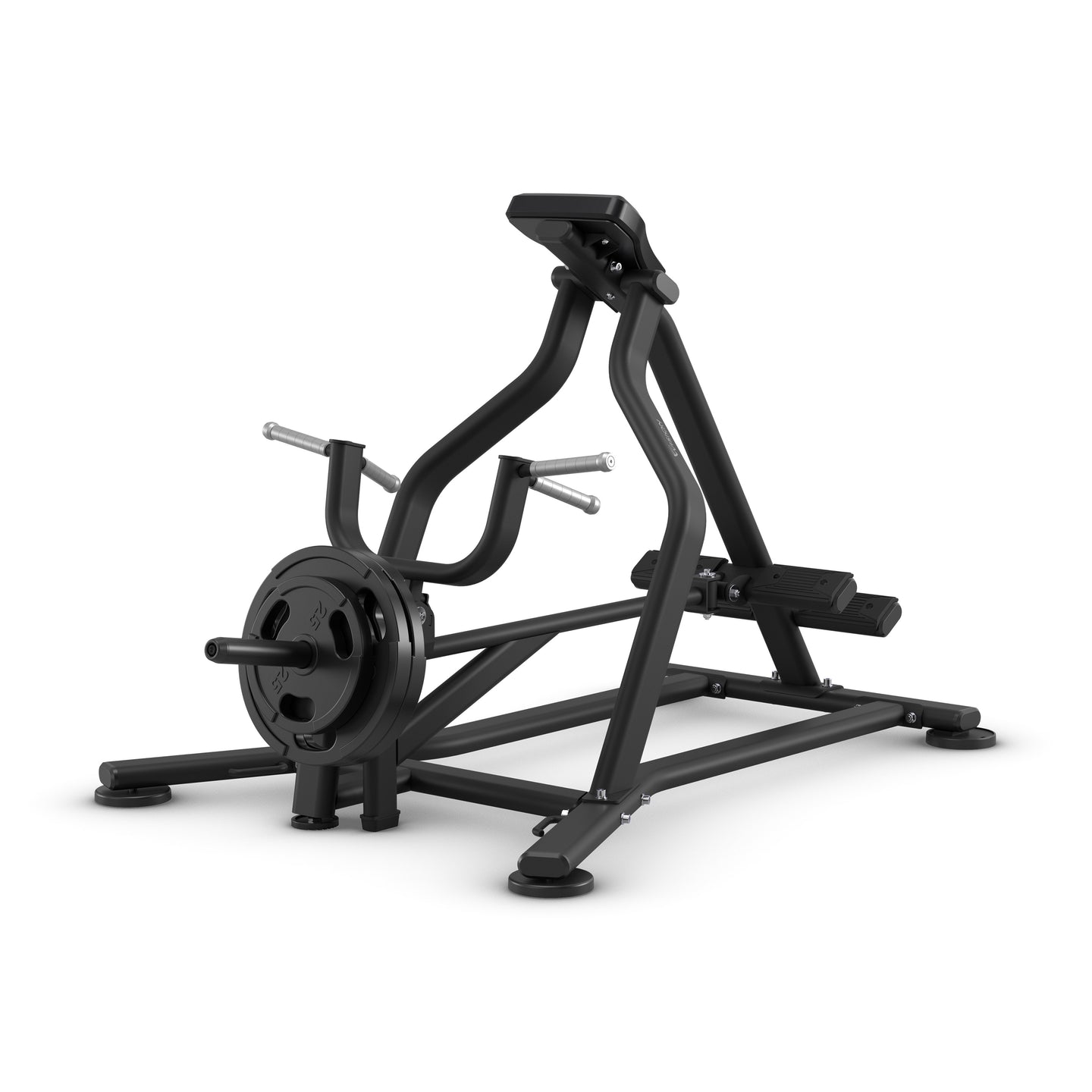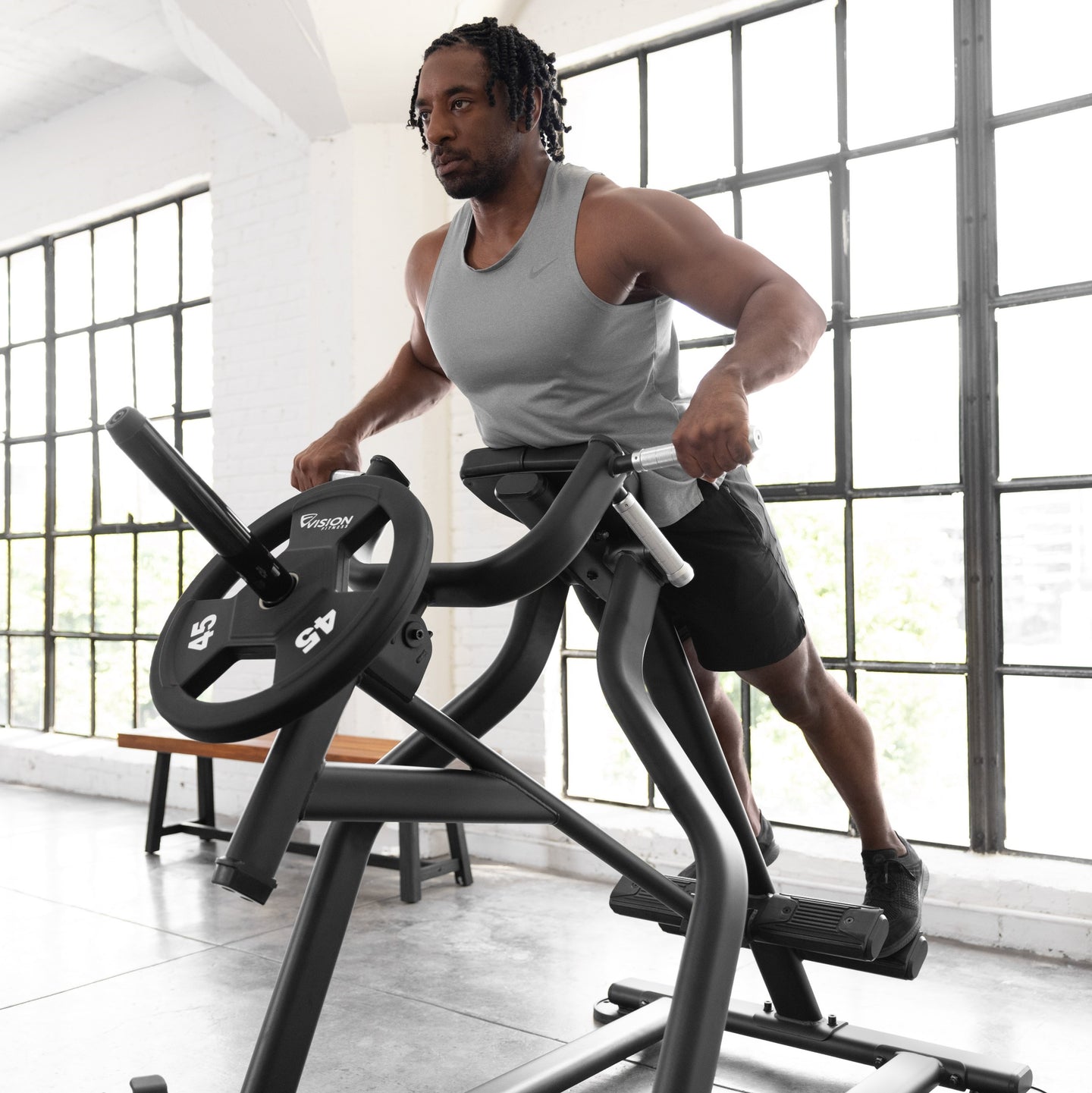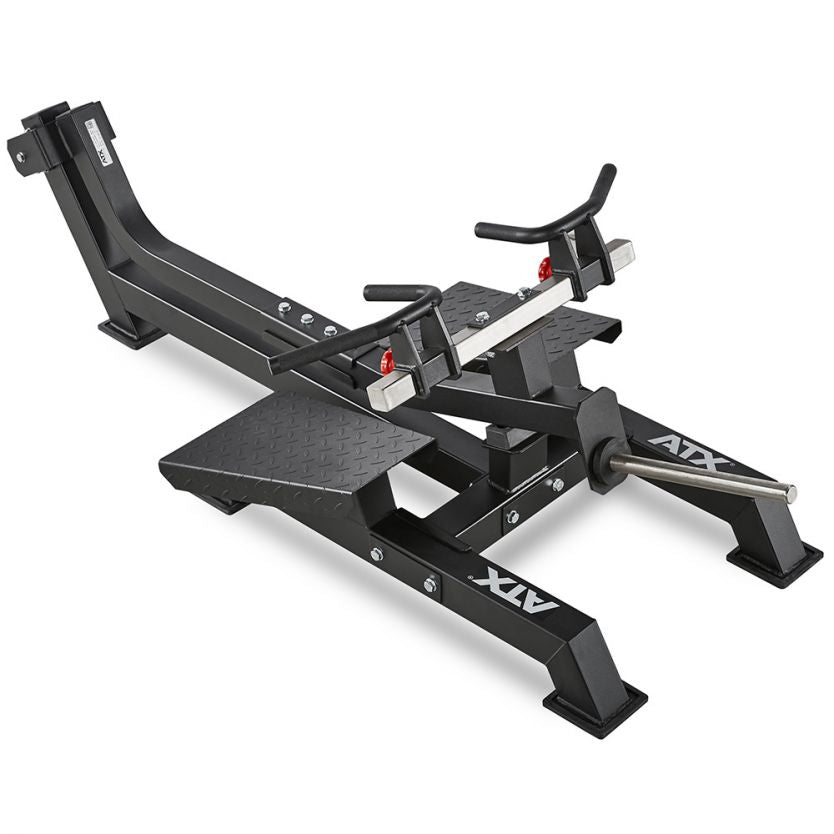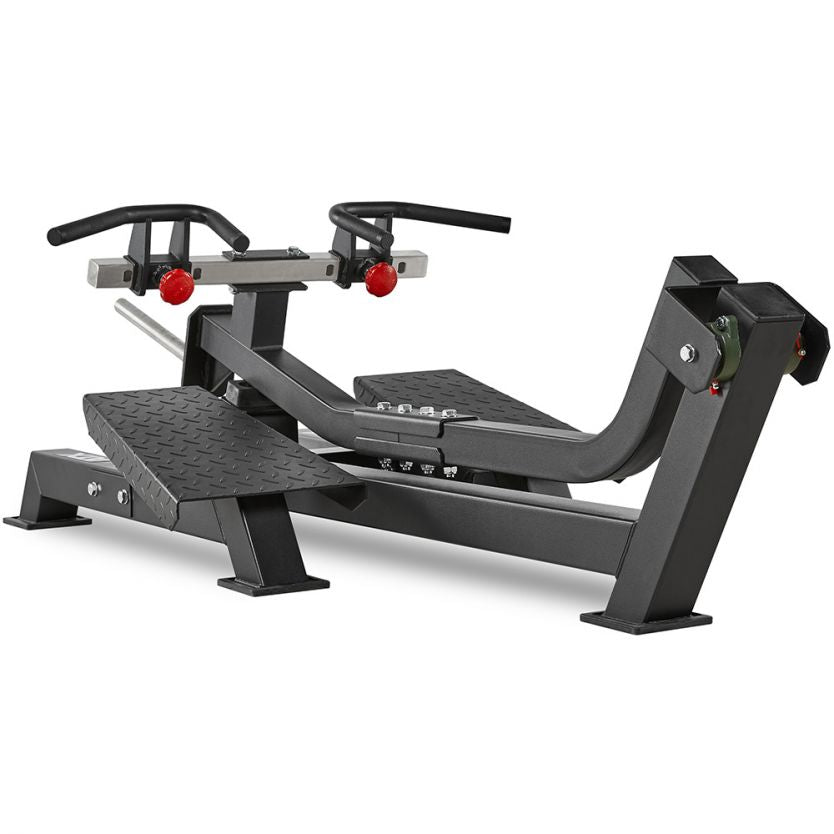Smooth. Fluid. Powerful.
The best lat pulldowns.
ATX® Lat Machine 750 / Lat pulldown machine with plug-in weights
ATX® Trinity Tower Lat Pulldown Station 3 in 1
ATX® Lat Pulldown Machine LPL-700 - Plate Load
ATX® Lat Pulldown - Z-Form
ATX® Lat Pulldown - Wall Pulldown Station - Plate Load
Lat Pull Down Plate Load - Vision Fitness
Backbone of your success.
Equipment for the lower back.
ATX® Hyperextension - Back Trainer
Back Extension - Vision Fitness
ATX® Glute Ham Developer Cross
ATX® Glute Ham Trainer Pro
ATX® Glute Ham Trainer - Floor
Seal Row Rowing Bench ATX®
T-Bar Row Machine Plate Load - Vision Fitness
ATX® T-Bar Row rowing machine
Back training with lat pulldown
A strong back is the foundation for health, posture, and performance. A strong back supports the spine, promotes upright posture, and protects against pain and postural deformities. Regular back training strengthens the muscular corset, improves mobility, and reduces muscular imbalances—in everyday life and during sports. Training with specifically designed fitness equipment that addresses the upper and lower back in isolation or functionally is particularly effective. Equipment such as the lat pulldown machine , back extension machine , glute ham developer, and T-bar row enable safe, versatile, and progressive training—for beginners, advanced users, and professionals alike.
Why is back training so important?
Many people suffer from tension, poor posture, or chronic back pain. The causes: a weakened back, lack of exercise, or one-sided strain in everyday life. Back training actively counteracts this and not only strengthens the muscles but also improves mobility , body awareness , and quality of life. Benefits of targeted back training:
1. Strengthening the core and supporting muscles
2. Better posture and spinal stability
3. Reduction of back pain and tension
4. Protection against herniated discs and postural damage
5. Optimized body balance and functional strength
6. Improved performance during everyday activities and sporting activities
A trained back is not only functionally important, but also gives the body an athletic V-shape that combines stability and aesthetics.
Which back muscles are trained?
Effective back training targets different muscle groups. The goal is to strengthen both superficial and deeper muscle areas to holistically improve stability, strength, and posture:
1. Latissimus dorsi (broad back muscle): forms the typical V-shape of the back, important for pulling movements
2. Trapezius : supports head posture, shoulder control and upper back tension
3. Rhomboids : stabilize the shoulder blades and promote an upright posture
4. Erector spinae (back extensor): protects the spine and ensures the straightening of the torso
5. Gluteus maximus and hamstrings : crucial for stability through coupled activity with the lower back
6. Teres major , infraspinatus, rotator cuff: for shoulder joint stability and controlled movements
A well-thought-out back workout takes these muscle groups into account – both in isolation and in functional movement patterns.
Which equipment is particularly suitable for effective back training?
1. Lat pulldown machines
The lat pulldown machine is the heart of any back workout—especially when it comes to targeted development of the latissimus dorsi and other upper back muscles . The guided movement allows for precise muscle feel and safe technique, making it ideal even for beginners. Benefits:
I. Various grip options: overhand grip, underhand grip, V-grip
II. Effective training for latissimus, trapezius, biceps and rear shoulders
III. Clean technique through guided movement
IV. Perfect progression options through weight gradation
With regular lat pulldown training, you will not only develop strength, but also a strong back with clear muscle contours.
2. Hyperextension
Hyperextension , also known as back extension, is one of the most effective exercises for the native back muscles . It strengthens the deep muscles in the lumbar region, which are largely responsible for stability and pain prevention. Benefits:
I. Strengthening the lower back and posterior chain
II. Preventive measures against back pain and poor posture
III. Simple design, but maximum effectiveness
Regular hyperextension training improves static holding strength and well-being in everyday life.
3. Glute Ham Trainer
The Glute Ham Developer (GHD) combines functional back training with core stability . Dynamic and isometric exercises target not only the glutes and hamstrings, but also the lower back, hip extensors, and deep abdominal muscles. Typical exercises:
I. Glute Ham Raise for dynamic muscle building
II. Back extensions with weight or band resistance
III. Isometric holds for core stabilization
4. T-Bar Row Machines
The T-Bar Row is a classic exercise for building muscle in the mid-back area . It intensively targets the rhomboids, trapezius, and latissimus dorsi and is especially suitable for advanced trainees looking to increase strength and volume. Benefits:
I. High load range for muscle building
II. Various grip variations: V-grip, parallel, wide
III. Back-friendly execution through fixed posture
The T-Bar Row is ideal for a complete back program, especially when combined with lat pulldowns and free exercises such as pull-ups.
How often and how intensively should you train your back?
For a healthy, strong back, just one to two targeted training sessions per week are sufficient – depending on your training level, recovery ability, and goals. Quality clearly prevails over quantity. Selecting effective exercises, proper technique, and sufficient recovery between sessions are important. A comprehensive pull session might look like this:
1. Lat pulldown (2 sets wide, 2 sets narrow)
2. Hyperextensions (3 sets, 15 reps)
3. T-Bar Row (3–4 sets)
4. Glute Ham Raise (3 sets)
Training tips
✦ Warm up with targeted mobility exercises for the thoracic spine and shoulder joints.
✦ Focus on controlled execution, full range of motion and muscle feel.
✦ Vary grip widths and angles to stimulate different areas of the back.
What should you look for when buying a back training device?
1. Stability and resilience: Devices made of solid steel frames , non-slip stands and durable components ensure long-term safety.
2. Ergonomic adjustment: Individually adjustable seating positions , cushion angles and handle systems for optimal posture.
3. Versatility and space requirements: Compact dimensions and multifunctional use make them ideal for home gyms. Our models are designed to save space while still allowing for a wide range of exercises.
4. Quality: With motion sports, you invest in proven quality, excellent workmanship, and first-class support.
Why back training with motion sports?
✅ Tested studio quality for professional back training
✅ Ergonomic design for comfortable and effective training
✅ Competent advice on equipment selection, setup and training questions
✅ Fast shipping and reliable customer service
✅ Optimal price-performance ratio


